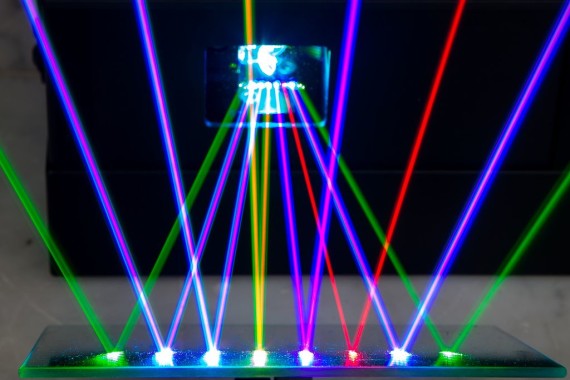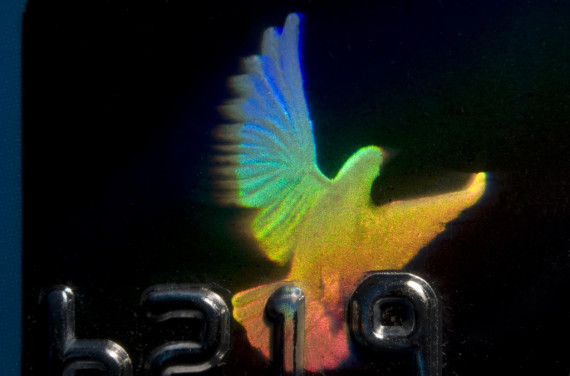Holography celebrates 70 years, since Hungarian physicist and inventor Dennis Gabor (5 June 1900 – 9 February 1979) introduced it to the public in 1947. Gabor was seeking to improve the resolution and definition of the electron microscope; instead, he devised a new technique for creating images. Perhaps we have never been so fascinated as when R2D2 projected a hologram of Princess Leia in Star Wars, but it is the less fanciful uses of holography that make daily life easier for us.
A Nobel winning invention that arose from a failure
At the beginning of April 1947, Dennis Gabor had already spent some time thinking about how to improve the resolution and definition of the electron microscope when he came up with a new process for recording images, which he called holography, derived from the Greek word “holos,” meaning complete. Gabor named his new invention thusly because it went beyond conventional photography, which only records one of the perspectives of an object. A holographic image also records its three-dimensional information.
The complex method designed by Gabor has two steps: the first is to fix the image of an object on a photographic plate in a certain way and the second is to illuminate that plate once it is developed. Gabor was not successful with his initial purpose, which was to improve the images of the electron microscope, but from that small failure was born his great success—a new method to represent reality.
In 1948 he made the first hologram with light emitted by a mercury lamp. The object was a small circular slide, almost one and a half millimetres in diameter, containing the names of physicists Huygens, Young, and Fresnel. That attempt was very rudimentary, but it laid the foundations of holography. In 1971, Dennis Gabor received the Nobel Prize in Physics for the invention and development of the holographic method.
The arrival of the laser
The manufacture of the first lasers, newly invented in the 1960s, permitted the perfection of Gabor’s holographic method, rather crude because the light that produced it was not very powerful. The first holograms that represented a well-defined three-dimensional object came from the hands of the American physicists Emmett Leith and Juris Upatnieks, and those of the Soviet physicist Yuri Denisyuk.

The system used by these physicists to make holograms first illuminated, with the beam of a laser, the object whose image they wanted to record. Then they placed a photographic plate that received the laser light after passing the object. The image obtained after developing the plate is known as a fringe pattern, and it is that which, when properly illuminated, generates the hologram.
The most practical uses
Holography is a very effective instrument for carrying out very high precision measurements. When an object is illuminated, the pattern of light beams that appears after passing it, and which can be picked up on a photographic plate, is unique, like a fingerprint. To see if there has been any kind of change in an object, it is possible to capture that pattern (called the wavefront) at different times and compare them. This makes it possible to determine with great accuracy, if any deformations have occurred on any object, even if the changes are as small as the wavelength of the light used.

Holograms are very difficult to falsify because it is almost impossible to get the same wavefront from something, if it is not part of the same object and if the whole process used to make the hologram is also not the same. Hence its applications in security, such as the small holograms that appear on banknotes and certificates. On the front of the five-euro banknote, in the silver band on the right side, there is the hologram of Europe (a character from Greek mythology), the € symbol, a window and the value of the banknote. This band complicates things a lot for counterfeiters.
Artistic images
Some museums use holograms of delicate and valuable objects to substitute for the originals. This is the case for the Lindow Man, a 2300 year-old mummy, which is well preserved in a chamber of the British Museum of London, while its hologram is presented both to the public and to researchers to study it.

Holography has also been featured in the cinema in some famous sequences. An example is seen in “Back to the Future II”, when Marty McFly is watching the advertising poster for the movie “Jaws 19” and suddenly the shark comes alive and attacks him. 3D laser holograms are undoubtedly the most spectacular.
The holography of the future
Among the current projects related to holography, perhaps the most anticipated is the development of a television with 3D technology without the need for glasses. Nowadays, mobile phone video conferencing has left the “Star Wars” holographic system out-dated for messaging. However, holographic technology could make 3D television take off, bypassing the use of glasses.
Other applications of holography that are coming include the creation of personal holograms or the development of aerial holograms that can be felt. The technique of aerial tactile holograms works thanks to a device developed at the University of Tokyo. These holograms, besides allowing an object to be observed in three dimensions floating in the air, also generate the illusion of being able to touch it.
Will we change the real world into a holographic world? Will we be able to we send our holograms to work? In any case, it seems that holography is sure to illuminate our future.
Comments on this publication